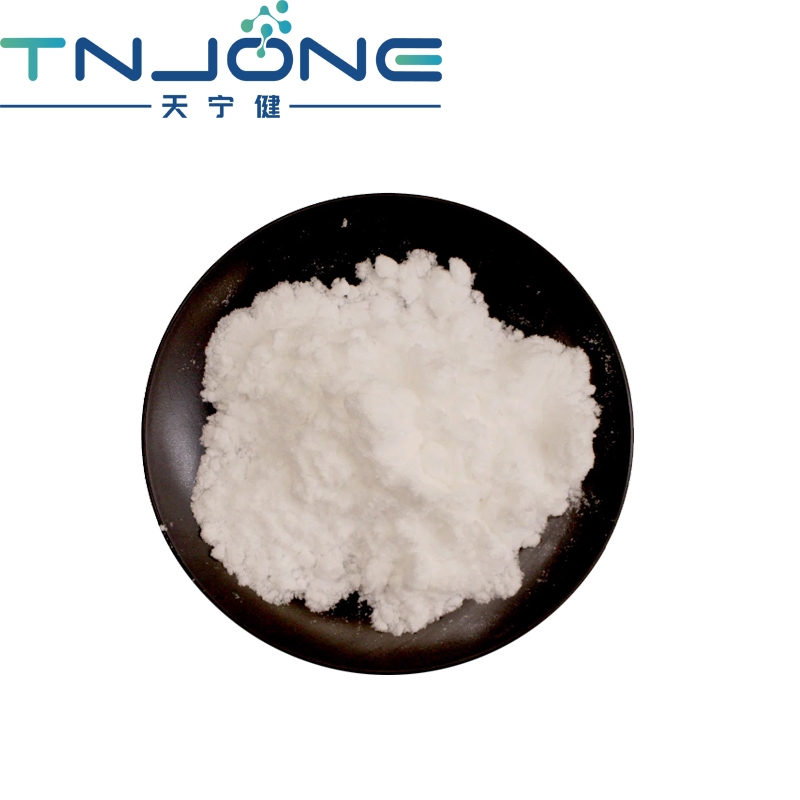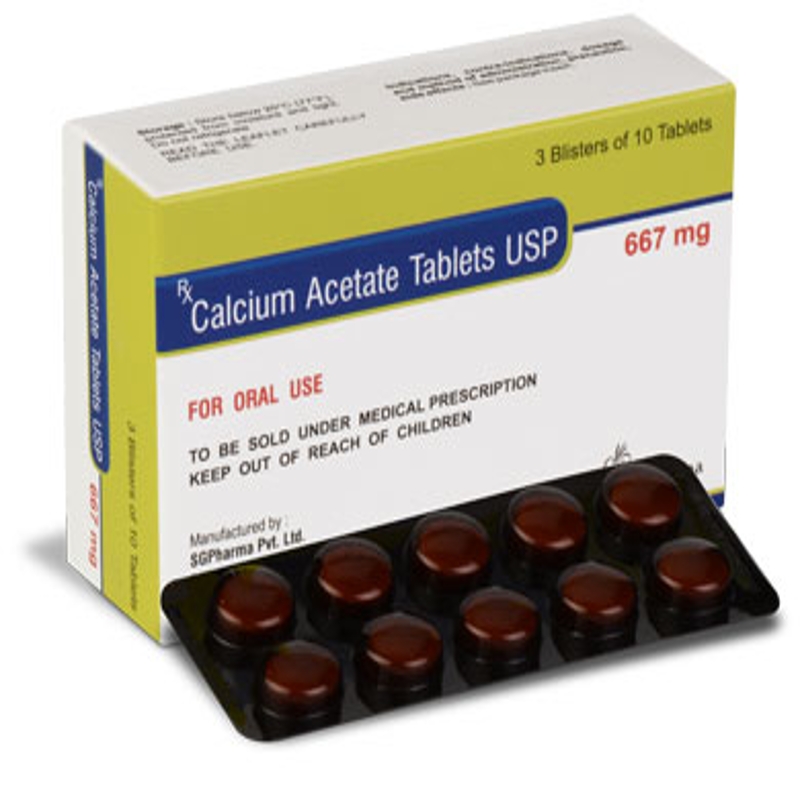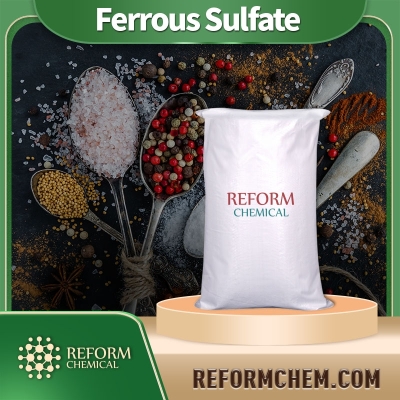-
Categories
-
Pharmaceutical Intermediates
-
Active Pharmaceutical Ingredients
-
Food Additives
- Industrial Coatings
- Agrochemicals
- Dyes and Pigments
- Surfactant
- Flavors and Fragrances
- Chemical Reagents
- Catalyst and Auxiliary
- Natural Products
- Inorganic Chemistry
-
Organic Chemistry
-
Biochemical Engineering
- Analytical Chemistry
-
Cosmetic Ingredient
- Water Treatment Chemical
-
Pharmaceutical Intermediates
Promotion
ECHEMI Mall
Wholesale
Weekly Price
Exhibition
News
-
Trade Service
Most elderly patients with acute myeloid leukemia (AML) who receive standard intensive therapy achieve morphological remission, but approximately 80% of patients experience relapse due to residual leukemia cells in the bone marrow
.
Compared with traditional response criteria (morphological blasts <5%), patients receiving intensive therapy achieved complete remission (CR) with a deeper negative measurable residual disease (MRD), which is a better prognosis (including predictors of overall survival [OS] and recurrence-free survival [RFS])
.
A retrospective study reported a lower cumulative relapse rate among patients >60 years of age who received a demethylating drug, but the study failed to identify MRD Correlation with OS or RFS
.
The phase III VIALE-A study established veneclava combined with azacitidine as a new standard of care for elderly AML patients who are not suitable for intensive chemotherapy and composite complete remission (CRc; complete remission [CR] + complete remission with incomplete hematologic recovery [CRi]) rates, compared with azacitidine alone, veneclax plus azacitidine group was negative for CRc+MRD The rate was higher (23.
4% vs 7.
6%, P<0.
001)
.
Our findings suggest that MRD-negative responses in patients receiving veneclax and azacitidine are valuable and warrant further study to understand the prognostic impact of MRD on OS and to determine its role in clinical management
.
However, there is currently limited evidence regarding the clinical utility of MRD monitoring in AML patients receiving reduced-intensity therapy
.
Therefore, we analyzed AML patients in the VIALE-A study who received veneclax in combination with azacitidine and who achieved CRc and whose MRD response could be assessed by multicolor flow cytometry (MFC) to determine MRD and prognosis.
correlation
.
Methods: In the ongoing randomized phase III VIALE-A study (NCT02993523), patients with AML receiving veneclax in combination with azacitidine were included in this analysis
.
The study included patients with AML who were ≥18 years of age and who were ineligible for standard induction chemotherapy due to age ≥75 years or comorbidities
.
Efficacy was evaluated according to CRc duration of response (DoR), event-free survival (EFS) and OS
.
RESULTS: Of the 190 CRc patients, 164 (86%) were MRD-evaluable (Figure 1), of which 67 (41%) were MRD-negative (<10-3) and 97 (59%) were MRD-positive ( ≥10-3)
.
Figure 1 The situation of patients Among the patients with molecular mutations, the CRc+MRD negative rate was 50% (10/20) in FLT3 mutation patients, 49% (21/43) in IDH1/2 mutation patients, and 30 in TP53 mutation patients % (6/20), compared with 88% (15/17) in patients with NPM1 mutations
.
Overall, baseline characteristics were similar across groups
.
The NPM1 mutation rate was significantly higher in MRD-negative patients than in MRD-positive patients (36% vs 3%)
.
Patients with CRc and evaluable MRD had a median number of MRD evaluations after baseline of 3.
0 (range: 1.
0-8.
0)
.
17 (25%) patients achieved a negative CRc+MRD response at the end of cycle 1, 18 (27%) patients at the end of cycle 4, 18 (27%) patients at the end of cycle 7, and 18 (27%) patients at the end of cycle 7 There were 14 (21%) patients after the cycle (Figure 2)
.
Figure 2 Cumulative incidence of MRD by treatment cycle In MRD-negative patients, the median DoR for CRc was not reached, and the 12-month estimated DoR for CRc+MRD-negative was 81.
2% (95% CI, 69.
3-88.
9)
.
The median DoR for patients with MRD-positive CRc was 9.
7 months (95% CI, 8.
0-15.
8) (Figure 3)
.
Subgroup analysis by age (≥75 years vs <75 years), AML subtype (de novo vs secondary), and cytogenetic risk (high vs intermediate risk) showed that, in all subgroups, MRD-negative patients had CRc The median DoR was longer than that of MRD-positive patients
.
Figure 3 Among MRD-negative patients, the median EFS was not reached, and the estimated 12-month EFS rate was 83.
2% (95% CI, 71.
6-90.
3)
.
Among MRD-positive patients, the median EFS was 10.
6 months (95% CI, 9.
0-13.
9) (Figure 4)
.
Patients who achieved CRc+MRD negativity at the end of the first cycle and after the first cycle had similar EFS
.
Figure 4 In CRc+MRD-negative patients, the median OS was not reached, and the estimated 12-month OS rate was 94.
0% (95% CI, 84.
7-97.
7)
.
Among MRD-positive patients, the median OS was 18.
7 months (95% CI, 12.
9 to not reached) (Figure 5)
.
The results of multivariate Cox regression analysis showed that with the achievement of CRc+MRD negativity, mortality was significantly reduced (HR=0.
285; 95%CI, 0.
159-0.
510; P < .
001)
.
Figure 5 Common "treatment period" grade ≥3 adverse events that occurred in ≥15% of patients in both groups were febrile neutropenia, neutropenia, thrombocytopenia, anemia, pneumonia, and leukopenia Decreased disease
.
Patients with MRD-positive CRc had higher rates of grade ≥3 neutropenia (54% vs 37%) and febrile neutropenia (54% vs 41%) compared with patients with MRD-negative CRc
.
Conclusions Veneclax combined with azacitidine has become a new standard of care for AML patients who are not suitable for intensive therapy
.
Compared with MRD-positive patients, patients who achieved CRc+MRD-negative had longer DoR, EFS and OS
.
This study demonstrates that MRD monitoring has a very important role as a predictor of OS in the setting of low-intensity therapy and warrants further study to determine its application in the management of AML patients
.
Future studies of de-intensity/discontinuation of treatment in the MRD-negative subgroup may consolidate the clinical utility of MRD surveillance in subgroups not suitable for intensive chemotherapy, and hopefully identify a subgroup with long-term EFS benefit
.
Likewise, because the majority of patients treated with azacitidine and veneclax were MRD-positive despite achieving CRc, in the MRD-positive subgroup, future studies add new agents to this regimen and Achieving MRD negativity as an endpoint would be of great significance
.
References: Keith W.
Pratz , Brian A.
Jonas , Vinod Pullarkat Christian Recher et.
al.
Journal of Clinical Oncology.
https://creativecommons.
org/licenses/by-nc-nd/4.
0/.
Stamp "Read the original text", we progress together
.
Compared with traditional response criteria (morphological blasts <5%), patients receiving intensive therapy achieved complete remission (CR) with a deeper negative measurable residual disease (MRD), which is a better prognosis (including predictors of overall survival [OS] and recurrence-free survival [RFS])
.
A retrospective study reported a lower cumulative relapse rate among patients >60 years of age who received a demethylating drug, but the study failed to identify MRD Correlation with OS or RFS
.
The phase III VIALE-A study established veneclava combined with azacitidine as a new standard of care for elderly AML patients who are not suitable for intensive chemotherapy and composite complete remission (CRc; complete remission [CR] + complete remission with incomplete hematologic recovery [CRi]) rates, compared with azacitidine alone, veneclax plus azacitidine group was negative for CRc+MRD The rate was higher (23.
4% vs 7.
6%, P<0.
001)
.
Our findings suggest that MRD-negative responses in patients receiving veneclax and azacitidine are valuable and warrant further study to understand the prognostic impact of MRD on OS and to determine its role in clinical management
.
However, there is currently limited evidence regarding the clinical utility of MRD monitoring in AML patients receiving reduced-intensity therapy
.
Therefore, we analyzed AML patients in the VIALE-A study who received veneclax in combination with azacitidine and who achieved CRc and whose MRD response could be assessed by multicolor flow cytometry (MFC) to determine MRD and prognosis.
correlation
.
Methods: In the ongoing randomized phase III VIALE-A study (NCT02993523), patients with AML receiving veneclax in combination with azacitidine were included in this analysis
.
The study included patients with AML who were ≥18 years of age and who were ineligible for standard induction chemotherapy due to age ≥75 years or comorbidities
.
Efficacy was evaluated according to CRc duration of response (DoR), event-free survival (EFS) and OS
.
RESULTS: Of the 190 CRc patients, 164 (86%) were MRD-evaluable (Figure 1), of which 67 (41%) were MRD-negative (<10-3) and 97 (59%) were MRD-positive ( ≥10-3)
.
Figure 1 The situation of patients Among the patients with molecular mutations, the CRc+MRD negative rate was 50% (10/20) in FLT3 mutation patients, 49% (21/43) in IDH1/2 mutation patients, and 30 in TP53 mutation patients % (6/20), compared with 88% (15/17) in patients with NPM1 mutations
.
Overall, baseline characteristics were similar across groups
.
The NPM1 mutation rate was significantly higher in MRD-negative patients than in MRD-positive patients (36% vs 3%)
.
Patients with CRc and evaluable MRD had a median number of MRD evaluations after baseline of 3.
0 (range: 1.
0-8.
0)
.
17 (25%) patients achieved a negative CRc+MRD response at the end of cycle 1, 18 (27%) patients at the end of cycle 4, 18 (27%) patients at the end of cycle 7, and 18 (27%) patients at the end of cycle 7 There were 14 (21%) patients after the cycle (Figure 2)
.
Figure 2 Cumulative incidence of MRD by treatment cycle In MRD-negative patients, the median DoR for CRc was not reached, and the 12-month estimated DoR for CRc+MRD-negative was 81.
2% (95% CI, 69.
3-88.
9)
.
The median DoR for patients with MRD-positive CRc was 9.
7 months (95% CI, 8.
0-15.
8) (Figure 3)
.
Subgroup analysis by age (≥75 years vs <75 years), AML subtype (de novo vs secondary), and cytogenetic risk (high vs intermediate risk) showed that, in all subgroups, MRD-negative patients had CRc The median DoR was longer than that of MRD-positive patients
.
Figure 3 Among MRD-negative patients, the median EFS was not reached, and the estimated 12-month EFS rate was 83.
2% (95% CI, 71.
6-90.
3)
.
Among MRD-positive patients, the median EFS was 10.
6 months (95% CI, 9.
0-13.
9) (Figure 4)
.
Patients who achieved CRc+MRD negativity at the end of the first cycle and after the first cycle had similar EFS
.
Figure 4 In CRc+MRD-negative patients, the median OS was not reached, and the estimated 12-month OS rate was 94.
0% (95% CI, 84.
7-97.
7)
.
Among MRD-positive patients, the median OS was 18.
7 months (95% CI, 12.
9 to not reached) (Figure 5)
.
The results of multivariate Cox regression analysis showed that with the achievement of CRc+MRD negativity, mortality was significantly reduced (HR=0.
285; 95%CI, 0.
159-0.
510; P < .
001)
.
Figure 5 Common "treatment period" grade ≥3 adverse events that occurred in ≥15% of patients in both groups were febrile neutropenia, neutropenia, thrombocytopenia, anemia, pneumonia, and leukopenia Decreased disease
.
Patients with MRD-positive CRc had higher rates of grade ≥3 neutropenia (54% vs 37%) and febrile neutropenia (54% vs 41%) compared with patients with MRD-negative CRc
.
Conclusions Veneclax combined with azacitidine has become a new standard of care for AML patients who are not suitable for intensive therapy
.
Compared with MRD-positive patients, patients who achieved CRc+MRD-negative had longer DoR, EFS and OS
.
This study demonstrates that MRD monitoring has a very important role as a predictor of OS in the setting of low-intensity therapy and warrants further study to determine its application in the management of AML patients
.
Future studies of de-intensity/discontinuation of treatment in the MRD-negative subgroup may consolidate the clinical utility of MRD surveillance in subgroups not suitable for intensive chemotherapy, and hopefully identify a subgroup with long-term EFS benefit
.
Likewise, because the majority of patients treated with azacitidine and veneclax were MRD-positive despite achieving CRc, in the MRD-positive subgroup, future studies add new agents to this regimen and Achieving MRD negativity as an endpoint would be of great significance
.
References: Keith W.
Pratz , Brian A.
Jonas , Vinod Pullarkat Christian Recher et.
al.
Journal of Clinical Oncology.
https://creativecommons.
org/licenses/by-nc-nd/4.
0/.
Stamp "Read the original text", we progress together







